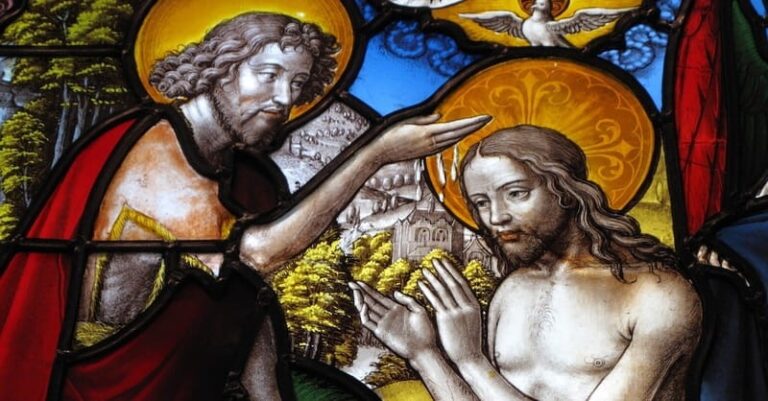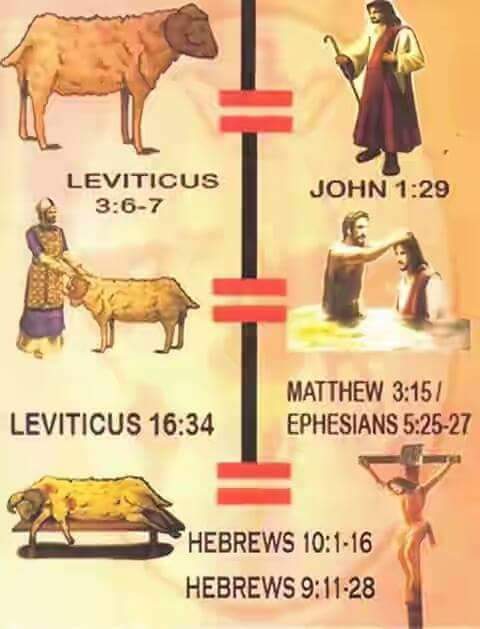In the New Testament, John the Baptist serves as the final High Priest of the Old Testament. According to Scripture [Malachi 3:1], John’s purpose was to pave the way for Jesus Christ, and he was recognized as the greatest prophet among those born of women. Being born of a woman, John held a unique position as the greatest prophet for all of humanity, surpassing even the kings of the Old Testament. How is John crucial to providing the exegetical evidence for the moment sin was transferred to Jesus? Read on.

During the Old Testament era, prophets held a higher stature than kings, and John exceeded the roles of both prophet and king. His significance transcended even that of Aaron, the first High Priest, as affirmed by Jesus Himself. John’s role as the last High Priest involved transferring the sins of the world onto Jesus, a fulfillment of the Old Testament practices of atonement through blood offerings and sacrifices.
In order to cleanse the world of its sins, John baptized Jesus, symbolizing the transfer of humanity’s sins onto Him. John’s mission was to bear witness to Jesus, urging humanity to repent and be cleansed by believing in the redeeming Gospel. The corrupt state of Israel led John to live in solitude in the wilderness, emphasizing the need for repentance.
In God’s eyes, the people of Israel, including their priests, had become unrighteous. They deviated from the lawful sacrifices prescribed in God’s law, neglecting essential rituals for sin atonement. Therefore, John chose to distance himself from them and called the people to repent through the baptism of repentance.
This baptism aimed to lead people to salvation by believing in Jesus, who would take away their sins. John emphasized that while he baptized with water, Jesus would baptize with the Holy Spirit. The significance of Jesus’ baptism in the Jordan River lies in Him taking away the sins of the world, serving as the ultimate Lamb that cleanses all sins.

To comprehend John the Baptist’s role, one must understand the lineage and purpose of High Priests. The Old Testament outlines the responsibilities of High Priest Aaron, whose descendants continued the task of offering atonement sacrifices. John, a descendant of Aaron, played a crucial role as the last High Priest in preparing for Jesus’ sacrifice, which fulfilled the Old and New Testament covenants.
Luke 1:5 details John’s lineage, underscoring the importance of understanding this messenger of God to comprehend Jesus fully. While faith in Jesus is crucial for salvation, acknowledging John the Baptist’s role is equally vital. The Gospels all begin with John the Baptist, highlighting his significance as the witness who recognized Jesus as the Messiah.
John the Baptist testified about redemption, proclaiming Jesus as God and the true Light. All four Gospels commence with John before discussing Jesus’ redemption, emphasizing the importance of John’s testimony. His role as a witness is pivotal in identifying Jesus as the Messiah.
In the Old Testament, sins were transferred through laying hands on a blameless sacrificial animal. Similarly, John the Baptist, born to the house of Aaron, as the last High Priest, laid hands on Jesus, transferring all sins onto Him through baptism. This act marked the end of the Old Testament practices, as Jesus became the unblemished sacrifice required for redemption.



Reflecting on the necessity of unblemished sacrificial offerings explains why Jesus was born to the Virgin Mary, who symbolized purity. She, being physically unblemished, gave birth to the perfect sacrifice, Jesus Christ, fulfilling God’s promise of redemption. And all this culminates to the point of this article; giving us the exegetical evidence for the moment sin was transferred to Jesus
